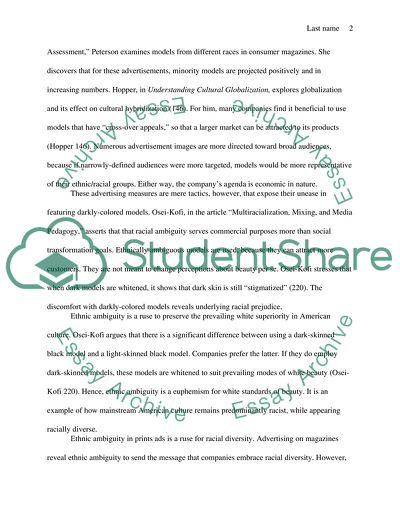The Fallacy of Diversity in Ethnically Ambiguous Advertisements Admission/Application Essay. Retrieved from https://studentshare.org/media/1600119-essay-3-advertisement
The Fallacy of Diversity in Ethnically Ambiguous Advertisements Admission/Application Essay. https://studentshare.org/media/1600119-essay-3-advertisement.


